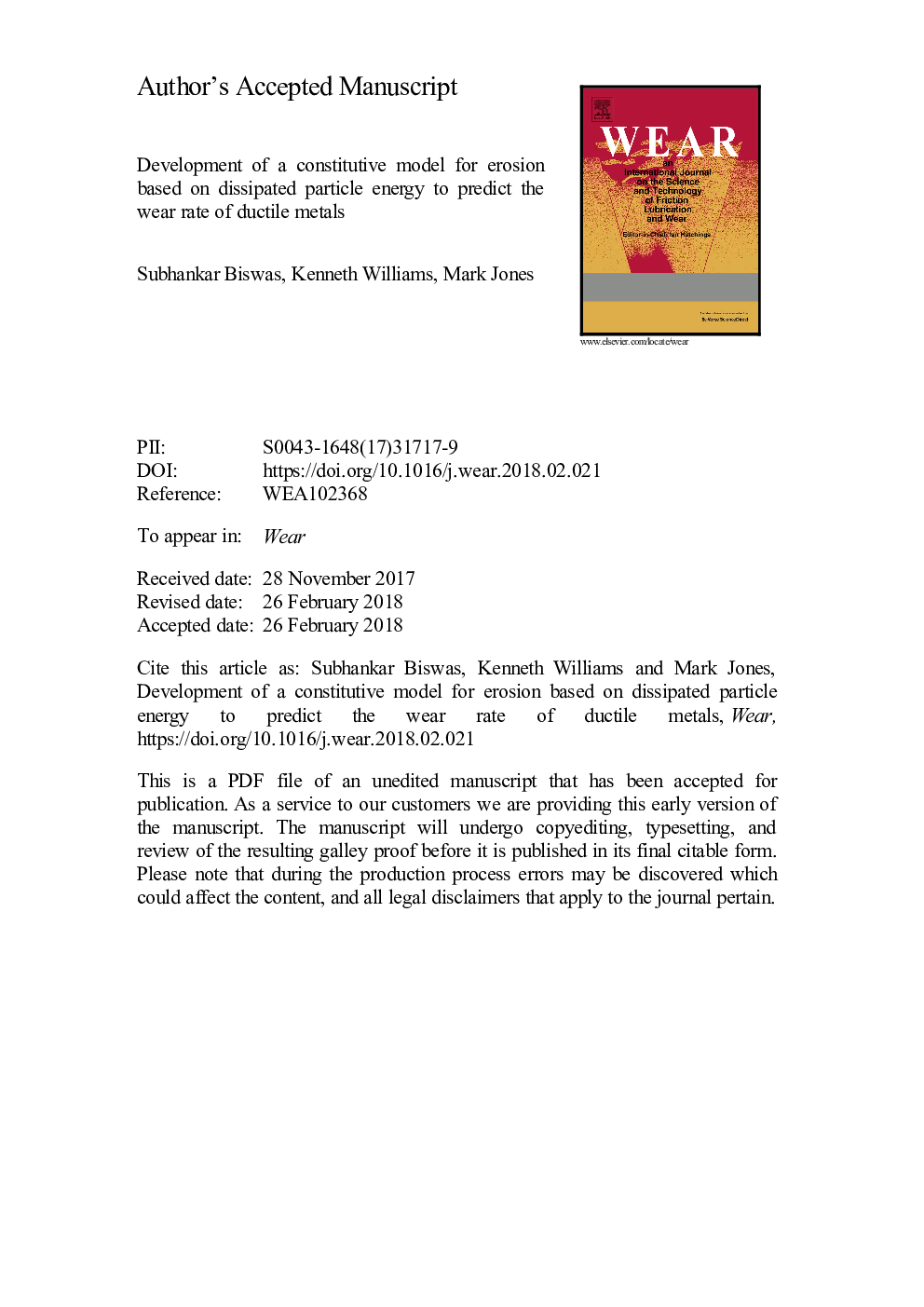| Article ID | Journal | Published Year | Pages | File Type |
|---|---|---|---|---|
| 7003905 | Wear | 2018 | 29 Pages |
Abstract
Subsequently, an improved energy based erosion model incorporating the surface material properties such as elastic modulus, Poisson's ratio, dynamic pressure and coefficient of restitution was developed. In particular, the new erosion model was developed in this study based on impact parameters, surface material properties and energy factors. The theoretical results using the model compared well with the experimental erosion rates and concluded that the model could accurately predict the experimental erosion values at all tested impact angles from 15° to 90° and impact velocities from 30â¯msâ1 to 90â¯msâ1. The developed model also enables determination of the coefficient of restitution, strain rate, dynamic pressure and some valuable parameters to determine the erosion mechanism.
Related Topics
Physical Sciences and Engineering
Chemical Engineering
Colloid and Surface Chemistry
Authors
Subhankar Biswas, Kenneth Williams, Mark Jones,
